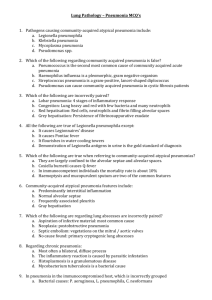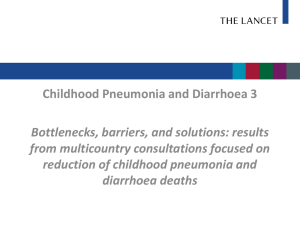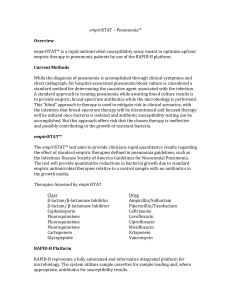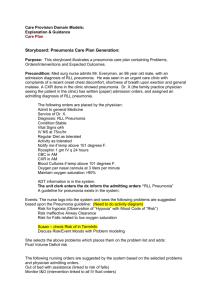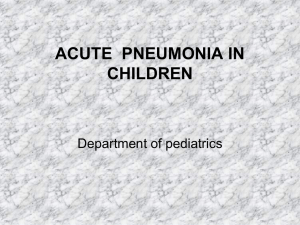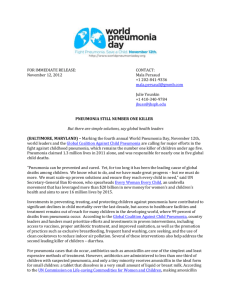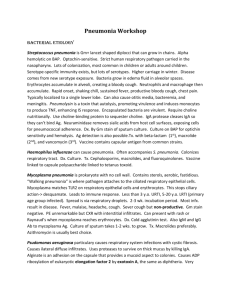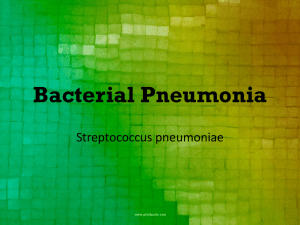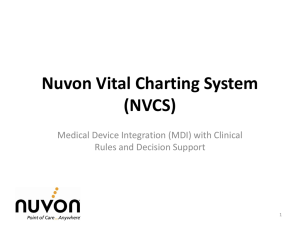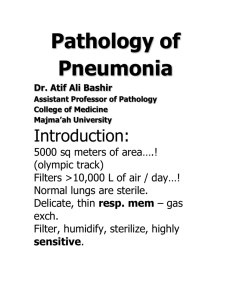Powerpoint of Pneumonia Graphics
advertisement
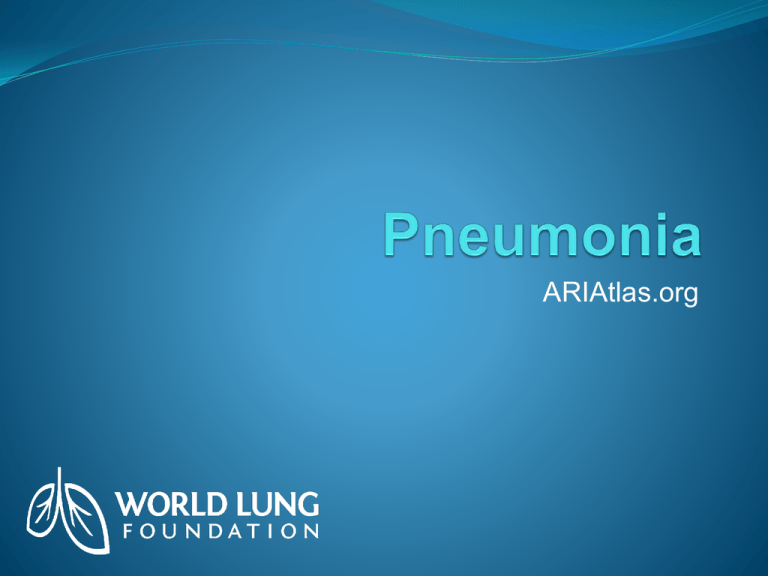
ARIAtlas.org Pneumonia is responsible for nearly 20 percent of child deaths globally. Source: ARIAtlas.org, World Lung Foundation 2010 Global Impact Almost 1.6 million deaths from pneumonia occur •annually in children under five, about one-fifth of all pediatric deaths around the world (based on 8.8 million pediatric deaths from all causes in 2008). By contrast, 732,000 children die from malaria and 200,000 from HIV/AIDS each year. Global Impact Every year, an estimated 156 million new cases of pneumonia •occur, 97 percent of them in the developing world. Seventy- four percent of those cases occur in just 15 countries, mostly in South Asia and sub-Saharan Africa, with 43 million cases in India alone. Improved living standards and access to antibiotics •transformed the trajectory of pneumonia in the developed world during the 20th century. In the United States, pneumonia-related deaths among children fell by 97 percent between 1939 and 1996. Actions That Make a Difference Breastfeeding plays a key role in preventing pneumonia, •providing proteins, enzymes, and other cells with immunological properties, as well as all the nutrients an infant needs. Actions That Make a Difference Access to antibiotics and vaccines should be scaled up. •Treating all children who need them with antibiotics could cure most cases of bacterial pneumonia and save as many as 600,000 lives every year. Children in countries that do not have access to the Streptococcus pneumoniae and Haemophilus influenzae type b vaccines are 40 times more likely to die than those living in countries that administer the vaccines routinely. Actions That Make a Difference treatment of pneumonia is imperative. As many •asPrompt 20 percent of infected children will die if they are left untreated, sometimes within three days after symptoms first appear. Adequate oxygen systems reduce mortality, but they are overlooked by the global health community as a key component of care. Actions That Make a Difference Caregivers need to be educated about pneumonia. In •the developing world about 20 percent of caregivers recognize its symptoms, and only about 54 percent respond to those symptoms by taking the child to a health care provider. WHO says that a combination of vaccines, standard •case management, and breastfeeding counseling could prevent 5.3 million pneumonia deaths over five years. The burden of pneumonia in the developing world is nearly ten times that of the developed world. Source: ARIAtlas.org, World Lung Foundation 2010 The lower a country’s income, the more child deaths from pneumonia. World Bank Income Group (2004) Source: ARIAtlas.org, World Lung Foundation 2010 Deaths from childhood pneumonia can be dramatically reduced with a package of proven interventions. Projected Lives Saved with Proven Pneumonia Interventions among “Countdown to 2015”Countries Source: ARIAtlas.org, World Lung Foundation 2010 Half the severe cases of pneumonia among children in developing countries are caused by pathogens that can be stopped by vaccines. Pathogens That Cause Pneumonia Source: ARIAtlas.org, World Lung Foundation 2010 Pneumonia is responsible for almost 1.6 million deaths a year in children under five. Source: ARIAtlas.org, World Lung Foundation 2010 Vaccines can prevent most childhood pneumonia, but HIV lessens their effectiveness. Percent of Children under Five in Whom Pneumonia Vaccines Are Effective Source: ARIAtlas.org, World Lung Foundation 2010

